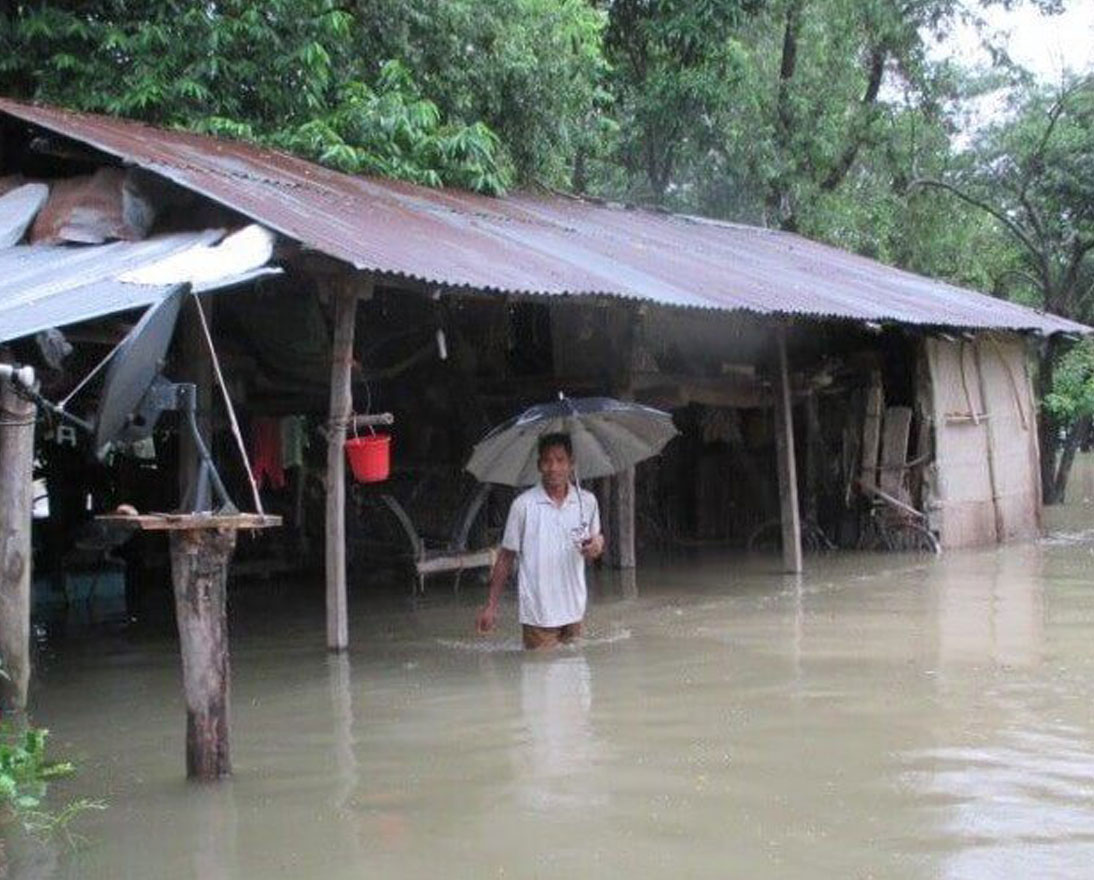Case study: Improving early warnings for Nepal’s most vulnerable
Natural hazardsArticleAugust 14, 2014
Zurich first visited Nepal in November 2012. This visit resulted in plans for working with our partners in the country. In the summer of 2014, our team returned to Nepal to check on developments. Our visit coincided with the onset of life-giving but hazardous monsoon rains. Being there when the flood danger was highest gave us an opportunity to see how the partners in the programs are working together, using their expertise and strengths to cooperate on the ground. Find out here how our flood resilience project in Nepal is getting on.
Implementing an early warning system in the Karnali river basin
In Karnali, about two hour’s drive from the city of Nepalgunj, a community-based early warning system (EWS) for floods originating in the Karnali highlands is one example of recent, successful improvements. Zurich alliance partner Practical Action, has worked with the Nepalese government’s Department of Hydrology and Meteorology to set up the system, which includes a river gauge station manned by an experienced station manager. The gauge station records the Karnali river’s levels. When the river rises to predetermined ‘amber’ or ‘red’ levels, this activates a series of alerts that are transmitted to authorities, and to communities where the necessary infrastructure, including emergency shelters and equipment, has already been set up as part of the program. People in the communities are trained to respond when they receive an alert. Regular drills ensure everyone knows how to get out of harm’s way.
But there is still more to be done. Those living in communities threatened by floods often depend on agriculture and handicrafts for their livelihood. Flood resilience needs to do more than address the immediate danger. It should also contribute to the physical health, financial stability, personal safety and ensure that people can get to market to sell their goods, even during the rainy season.
There are many factors that need to be considered to be able to further help communities in the Karnali river basin. We need to better understand the relationships between flood hazards upstream and how they can affect the river’s course during the rainy season by making better use of modern weather forecasting and rainfall-to-runoff models. We need to know more about how dams and construction.
Bringing our alliance partners together in the Koshi river basin
The valuable experience gained in Karnali provides a great opportunity to transfer knowledge to provide a similar early warning system along the Koshi river, where the long-term effects of devastating floods in 2008 still cast a shadow over the region. In this area, Practical Action is supporting the Nepalese Red Cross in a project led by the World Bank and the Nepal Risk Reduction Consortium under the ‘Flagship 4’ initiative (see flagship4.nrrc.org.np for details). We met with those living in these communities to discuss progress on the current project. The work includes vulnerability and capacity analyses, as well as consideration of the challenges still to be faced, potential solutions and how these might be implemented.
One challenge that already has been addressed is in the town of Prakashpur, where two administrative wards – ‘4’ and ‘5’ – are ‘split’ by a tributary of the Koshi river. Half of each ward is located on the right bank and the other on the left bank. This division between communities makes it more difficult to implement projects in the respective wards, because the people living on the same side of the river feel a This situation illustrates the challenges of operating a community-based program where the definition of a community can vary extensively and where the administrative set-up is not always optimal to respond to the challenges that communities are facing.
Zurich’s role in these projects
Zurich is contributing its hazard and risk expertise in a number of different ways to enhance flood disaster risk-reduction approaches in the Karnali and Koshi river basins. We have provided a more consistent hazard and risk-based approach to selecting communities to ensure the most vulnerable are included in the program. We have also taken into consideration new approaches that have already been developed in our other country programs in Indonesia, Mexico and Peru to create practical, long-term solutions for flood-affected communities. Among the possible solutions, those harnessing new technologies, while at the same time offering low-cost solutions are especially appealing. The community programs in the Karnali and Koshi river basins will be an important measure of our success in enhancing flood resilience. It will also offer valuable insights for similar projects elsewhere.
Any information included in this publication, was compiled from sources believed to be reliable for informational and educational purposes only. All sample policies and procedures herein, if any should serve as a guideline, which you can use to create your own policies and procedures. We trust that you will customize these samples to reflect your own operations and believe that these samples may serve as a helpful platform for this endeavor. Any and all information contained herein is not intended to constitute advice (particularly not legal advice). Accordingly, persons requiring advice should consult independent advisors when developing programs and policies. We do not guarantee the accuracy of this information or any results and further assume no liability in connection with this publication and sample policies and procedures, including any information, methods or safety suggestions contained herein. We undertake no obligation to publicly update or revise any of this information, whether to reflect new information, future developments, events or circumstances or otherwise. Moreover, Zurich reminds you that this cannot be assumed to contain every acceptable safety and compliance procedure or that additional procedures might not be appropriate under the circumstances. The subject matter of this publication is not tied to any specific insurance product nor will adopting these policies and procedures ensure coverage under any insurance policy. Nor does Zurich endorse or reject the information presented herein. Zurich’s name and logos are trademarks owned by Zurich Insurance Company Ltd.

